Is that a "thermoscope" in your pocket or are you just happy to see me?.... (for travel, science, history and physics geeks)
Here I am exploring the Museums of Florence from behind the lens.
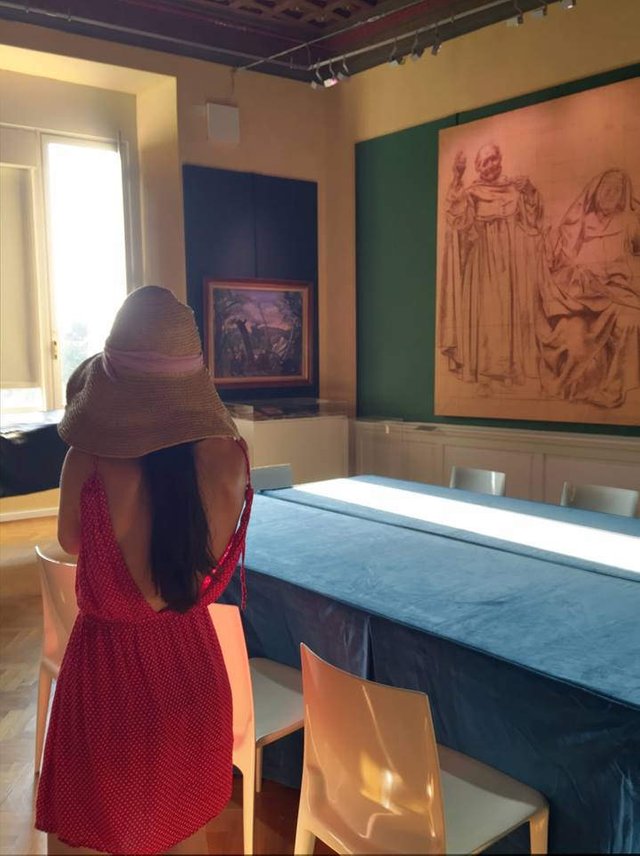
I like details. I like glass. I like candy. I guess that's why I was drawn to a cabinet filled with tiny glass tubes containing colorful spheres suspended in fluid as I wandered the halls of the Galileo Museum in Florence.
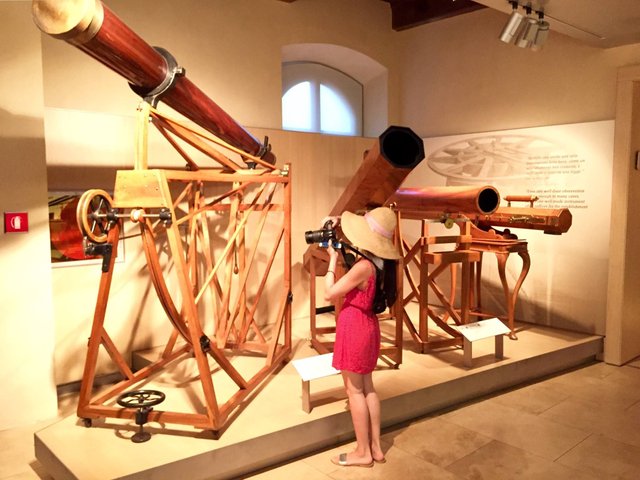
This brief encounter with a bunch of strange looking measuring devices got under my skin.
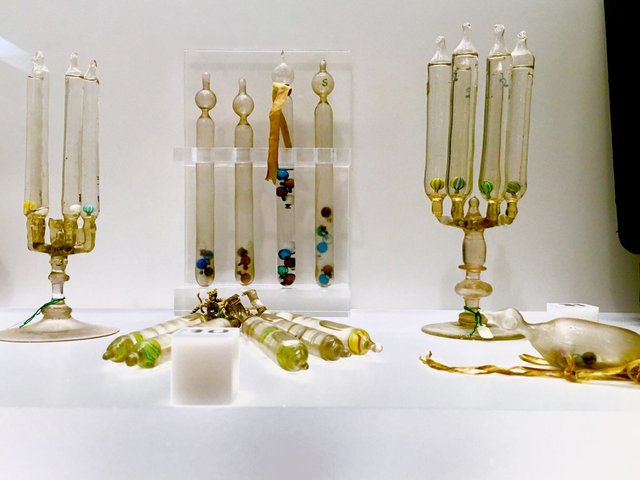
It seemed that I knew far less about thermometers and how they came into existence than I thought. While reading about the history of the thermometer it occurred to me that there might be a few fellow geeks on Steemit that would like to know a little bit more about the thermometer... I hope I am right!
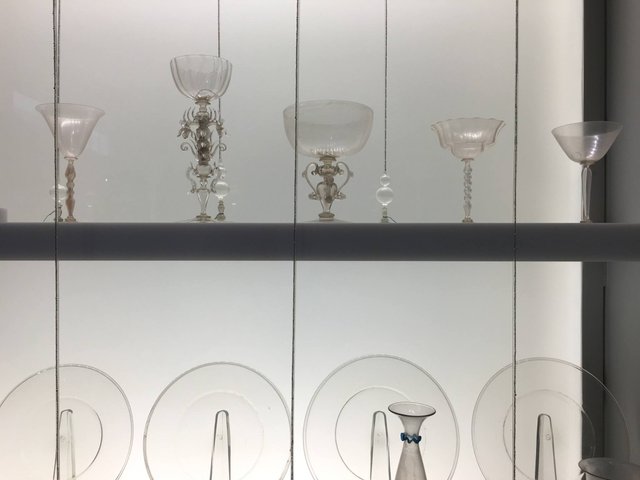
The earliest attempts at measuring temperature were written about 460 B.C. by Empedocles of Agrigentum in his book, On Nature, but it was not until the 1600s that standardising the measurement of temperature became an exercise in precision. Before the thermometer, there was the thermoscope, and roughly around the time of its invention, there were several other instruments that were devised to measure temperature. Like some useful innovations, it is not easy to determine the precise moment it came into being but here is a list of ten men who contributed to the development of the standard thermometer.
Below is a list of 10 people who were instrumental in the creation of the modern thermometer.
PHILO OF BYZANTIUM
As early as 240BC, Philo of Byzantium attempted to record changes in temperature. Philo's manuscript described an experiment in which he placed a hollow sphere over a jug of water. In the sun, the water warmed, and bubbles would form, as air escaped from the sphere. In the shade, the water cooled and the air in the sphere contracted. This contraction caused air to return to the sphere. The difference was an indication that the temperature had changed.

Source:http://galileo.phys.virginia.edu/
GALEN
In A.D. 170 Galen, a Greek scientist and medical doctor attempted to document a standard neutral temperature. To do this, he used a mixture of boiling water and ice in equal parts. Using the principle of comparative temperatures, Galen's scale was able to record a four-point increase or decrease in temperature on either side of his temperature-neutral mixture.
GALILEO GALILEE
Galileo, one of the men who discovered that objects fall at the same speed regardless of their weight, is also credited with the discovery of a rudimentary thermometer which paved the way for future developments. Depending on the surrounding temperature, glass spheres containing alcohol set inside a glass tube filled with water rose or fell. Their positions indicated a difference that enabled one to see if the temperature was higher, lower or the same. With only a few fixed points on the thermoscope, it was not possible to measure the difference between each point. This disqualified Galileo's invention as a thermometer in the strictest sense. Further due to their design which included a cumbersome water bath and an unsealed tube, their measurements were subject to changes in air pressure and evaporation. The Galilean Thermometer worked but needed refinement.
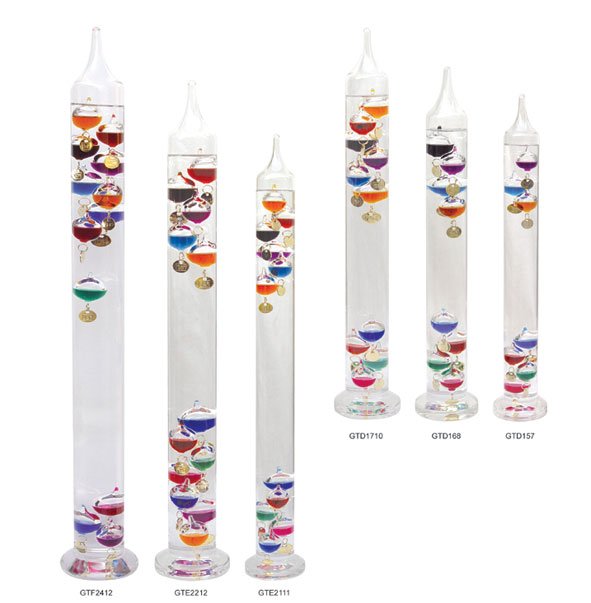
Source: www.diytrade.com
SANTORIO SANTORIO
Later in the 16th century, an Italian physician and teacher at the Padua University, added a scale to Galileo’s thermoscope. Widely credited with being the inventor of the clinical thermometer, Santorio's addition allowed for quantitative readings although the scale he used was also arbitrary. These unstandardized measures had limited use and were unsuitable as a standard guide for measurement. Further, Santorios instrument still only measured the temperature of the air, which made its efficacy rather weak.
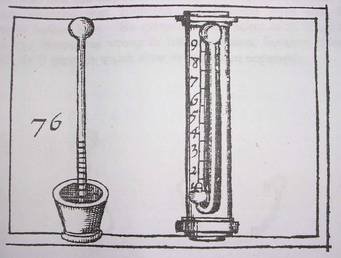
Source: www.zytemp.com
ROBERT FLUDD
In 1638, without any knowledge of Galileo's experiments, Robert Fludd modified the Philo-thermometer. Fludd's innovation was the use of an uncalibrated scale which he added to a sphere placed vertically over water. Credited as being the person who added a proper range to a thermoscope, Fludd may have taken some inspiration from the works of Philo Of Byzantium as he had access to Philo's ancient manuscripts.
ROBERT HOOKE
Robert Hooke's addition to the development of the thermometer was the use of "zero" as a starting point in 1664. The use of zero as well as the problematic design of the thermoscope was experimented with and improved upon throughout the 1600s. These issues led to the development of the sealed glass thermometer which came next.

Source: www.amjmedsci.com
GRAND DUKE OF TUSCANY FERDINANDE II DE'MEDICI
In 1654, almost two decades after Robert Fludd's addition of a scale to the thermoscope, the Grand Duke of Tuscany fashioned a thermometer in a sealed tubes filled partly with alcohol. Sealing the glass tube addressed the issue of portability as well as prevented measurements from being affected by varying air pressure. The first thermometer had been invented though this too lacked a standardised scale.
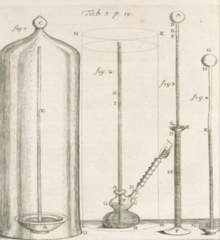
Source: www.wikipedia.com
OLAUS ROEMER
There were many minor changes and variations on both the thermoscope and Medici's version of the thermometer during this period. In Copenhagen, an astronomer named Olas Roemer decided to use ice and boiling water as two fixed reference points. As such, what we now know of as 0 was his lowest point, 60 was the temperature of boiling water, 7.5 was the temperature at which ice melted and 22.5 was body temperature. To indicate the temperature, Roemer used red wine but there were still uncertainties as to how to standardise the scale for universal use. Further, alcohol was not a good indicator of zero as it has a much lower freezing point than water.
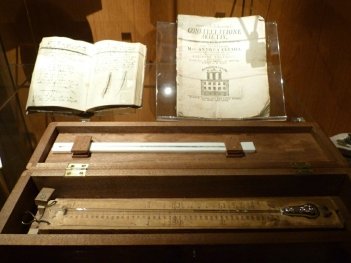
Source: www.tvcalx.co.uk
DANIEL FAHRENHEIT
At the age of 22, Daniel Fahrenheit met Roemer then aged 64 and an internationally acclaimed scientist. Roemer shared his knowledge of thermometer with the young scientist. Fahrenheit used Roemer's scale (°Rø) until 1717 with only one adjustment, he divided each °Rø into four °F. With his improved thermometer, he discovered that children have higher body temperatures than the elderly. Fahrenheit also began using Mercury instead of alcohol. Mercury was a better choice as it was easily visualised in glass tubing and remained in its liquid form over a wide range of temperatures. Fahrenheit is still used today but only in certain countries.
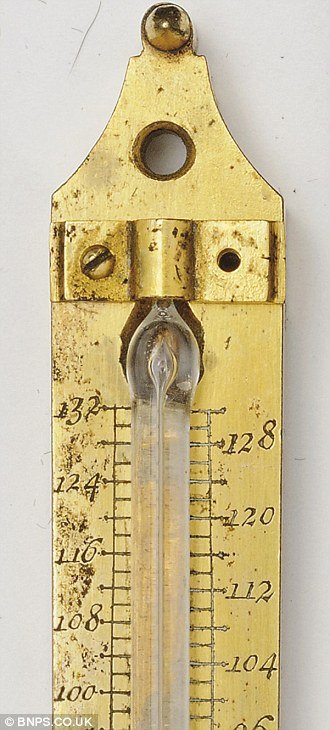
Source: www.dailymail.co.uk
CELCIUS
A Swedish astronomer, Ander Celsius, invented the Celsius scale in 1742 by setting the freezing point of water at 0° and the boiling point of water at 100°. Celsius performed, documented and published his scientific experiments designed to define an international temperature scale. His findings led him to conclude that temperature was independent of longitude and latitude and atmospheric pressure. Formerly referred to as centigrade, (Latin for "hundred steps) a year after his death, the Celsius's scale was reversed by Carl Linnaeus to allow for more practical measurement. The Celsius scale is still in use today for everyday purposes.

Source: www.astro.uu.se
KELVIN
While you can have zero energy, you can not have negative energy so there are some situations where only a positive number makes sense. In 1984, Lord Kelvin invented a scale for measuring temperature that had a finite starting point and did not include negative numbers. The ensuing Kelvin scale represented the lowest temperature in the universe and was referred to as "absolute zero". Absolute zero, or "infinite cold" referred to a state in which molecules stopped moving and is written as 0 K, (- 273°C degrees Celsius). On the Kelvin scale, water freezes at 273.15 kelvin, but on the Celsius scale, water freezes at 0 degrees.
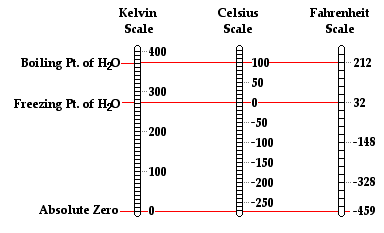
Source: www.physicsclassroom.com
Very interesting. Always liked the Galilean ones but you don't see those very often.
You should consider including a source for your images. Including a source not only gives credit to who made the images but shows you put time and effort into making your post. This may make people more likely to vote on it.
If images are Public Domain or CC0 you could just indicate that at the end of your post. All photos are Public Domain for example.
Finding the original source isn't necessary. A link to where you found it will do.
Thank you! I'll do that now.
Nice post and funny post tittle 🙂
Interesting telescopes and glass art. upvoted